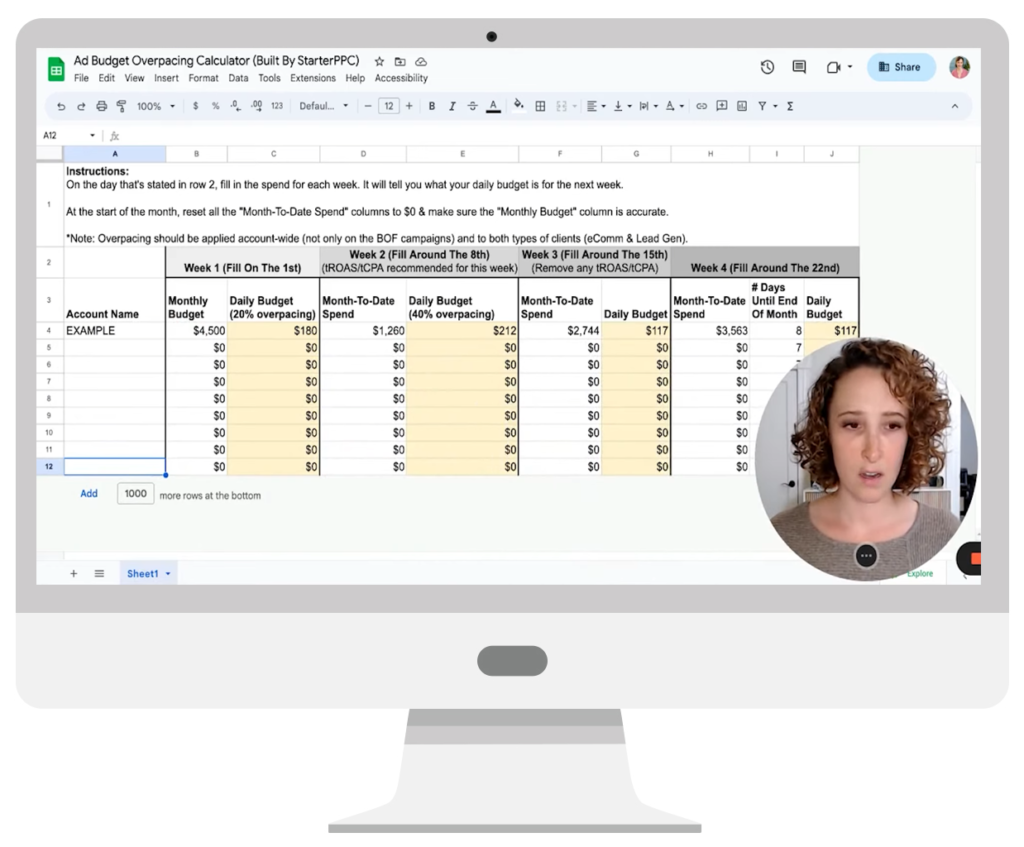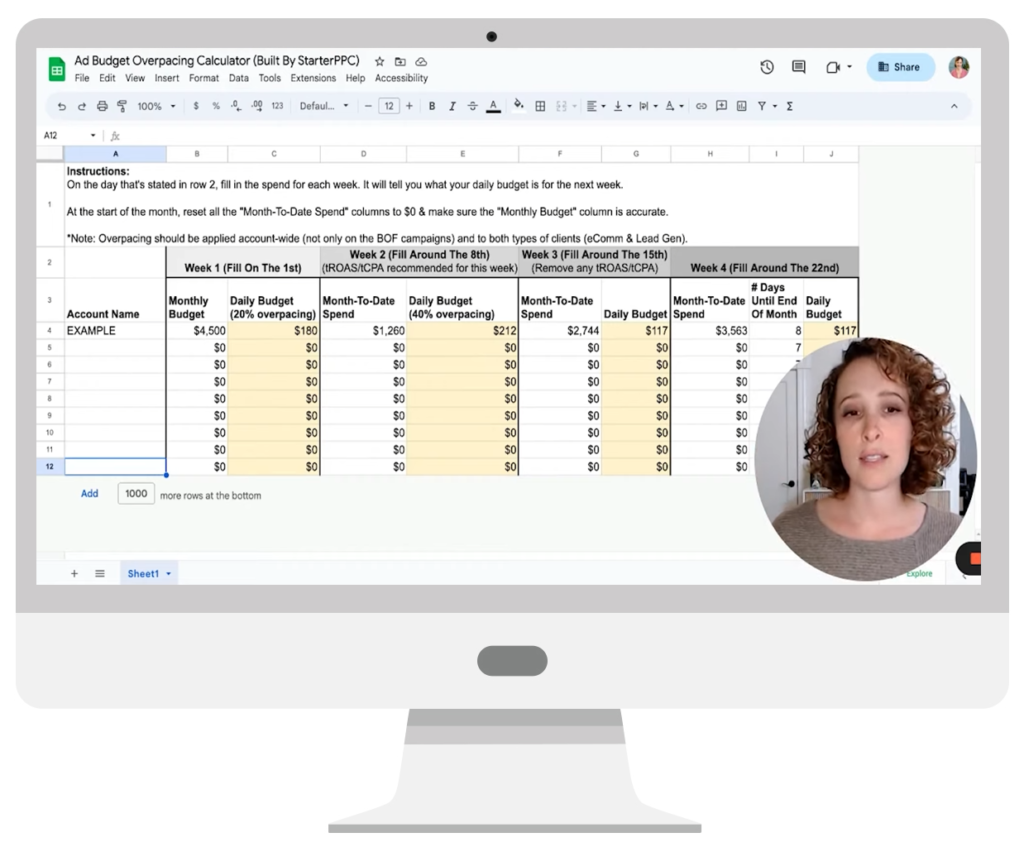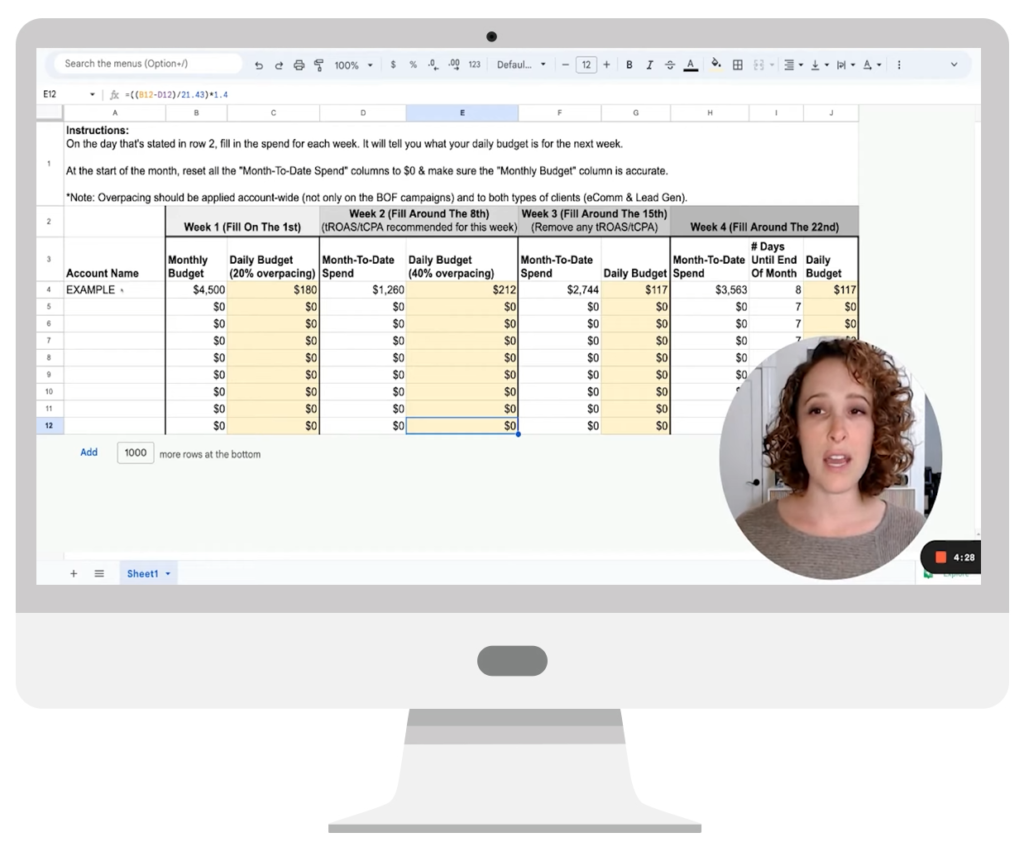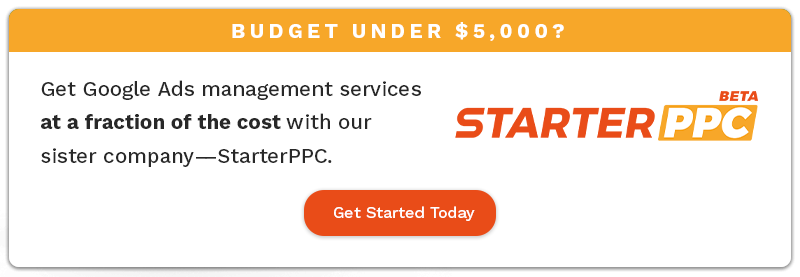Never underestimate the power of a consistent workout schedule.
No, we haven’t suddenly switched gears from Google Ads to getting ripped, but it does help to think of the Google Ads algorithm like a muscle when your goal is to be successful with your paid traffic campaigns.
In this video, Regina shares a straightforward strategy for those looking to grow and scale their business with Google Ads.
Heads up: This strategy seems to be more necessary for accounts with smaller ad budgets—which, incidentally, is what our sister company StarterPPC is all about—so feel free to skim this blog or take a pass altogether if your (or your client’s) monthly ad spend is on the higher end ($5K+).
Ready to hit the gym? First, a quick warmup.
The overpacing/underpacing spend schedule is a strategy that Regina and the StarterPPC team have found extremely helpful with lower-budget campaigns. In a nutshell, it works by forcing the Google Ads algorithm through mini “learning periods” so that it will gain strength and stay flexible. Like a muscle. See where we’re going with this metaphor?
Remember, the Google Ads algorithm is that fun little equation that determines where your ads appear on the search engine results page (SERP). Basically, it decides who sees your ad and when, so it’s kind of important.
And Regina has found that this easy-to-implement strategy helps the algorithm to grow more steadily—and more quickly—than if you were to simply set a daily spend and keep it that way month over month.

How does it work? We start by overpacing.
The overpacing/underpacing strategy is all about encouraging the Google Ads algorithm to grow. If you don’t do this, and if you just give it a standard amount of budget day over day, the algorithm tends to home in on what works. And, when it finds something that works, it just stops trying. This is precisely what we’re aiming to avoid.
Using this strategy, we are essentially coaxing the algorithm into these mini learning periods and forcing it to do hard things. For example, says Regina, we give it more budget than it’s used to—maybe 20% or 40% more, and just for a short period of time—to make it try new things.
New things like showing different products that it usually doesn’t show, or testing different placements that it hadn’t tested before. Sometimes, it even tries to find new users or new pockets of the market, and through this process it can discover new things that work but that it wasn’t using before now.
And then (you guessed it!) underpacing.
After a couple weeks, you want to lower the budget back down to where you want it to be. And in order to do that, you will need to underpace to make up for all the time when you were overpacing.
At which point the algorithm will say, “Oh, that’s all I have to spend today? No problem at all, seeing as I just spent way more than that for the past two weeks!” And it’s off and running, gobbling up all the easy, low-hanging fruit that it’s discovered and allowing your return to shoot up during this time period—even though your conversions have gone down because you’re now spending less every day.

So, says Regina, it has some pros and cons and can feel a bit like a rollercoaster ride, but it’s necessary when you’re trying to encourage growth instead of just keeping things the same.
Typically, the StarterPPC team will spend the first half of the month overpacing and the second half underpacing, so clients will see the return go down during the first two weeks and shoot up in the last two weeks, while the conversions go up and up in the first two weeks and then down in the last two weeks.
But it all evens out in the end, she explains.
Again, this strategy seems to be more necessary in accounts with smaller ad budgets. Why? Because when you have a larger budget, says Regina, you have more conversions, and more conversions means more power because you have more frequency of data points which the algorithm can use to get a leg up over the competition. (Basically, it’s going to grow on its own and you don’t really have to encourage it and force it to do hard things.)
But for businesses working with smaller budgets, the overpacing/underpacing strategy can be a game changer.

Use this simple spreadsheet to try it out.
Overpacing/Underpacing Spreadsheet
This is the spreadsheet used by StarterPPC to track the overpacking/underpacing spend schedule. About midway through the video (5:25), Regina walks viewers through filling out the spreadsheet using an example client. This will help you get an idea of what to spend at the beginning of each new week, and she also explains an optional “advanced” strategy (9:05) of the best ways to apply tROAS and tCPA while using the overpacing/underpacing strategy.
The takeaway
Regina wraps up by saying if you’re working with a small budget, this strategy really helps to speed things up and in some cases feels like the only thing that’s helping the algorithm to learn and grow—which ultimately helps your business and your bottom line. So what do you say? Ready to take your Google Ads campaigns to the gym? Let’s do this. Use this link to make a copy of the spreadsheet, and remember to only change the fields in white (not yellow).
Good luck!
Author
Pamela is the Senior Content Writer at Solutions 8. When she's not writing, you can find her hiking in the woods with her dogs. She is currently on a quest to visit every national park in the United States.
 Pamela Sapio
Pamela Sapio












